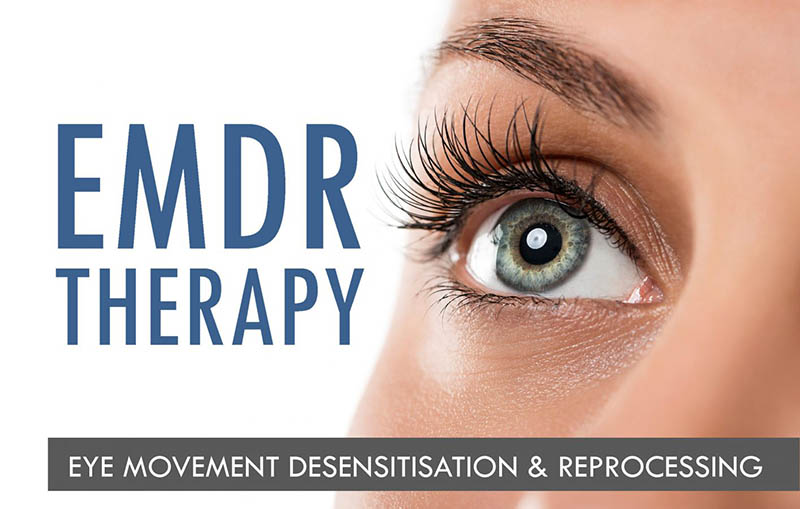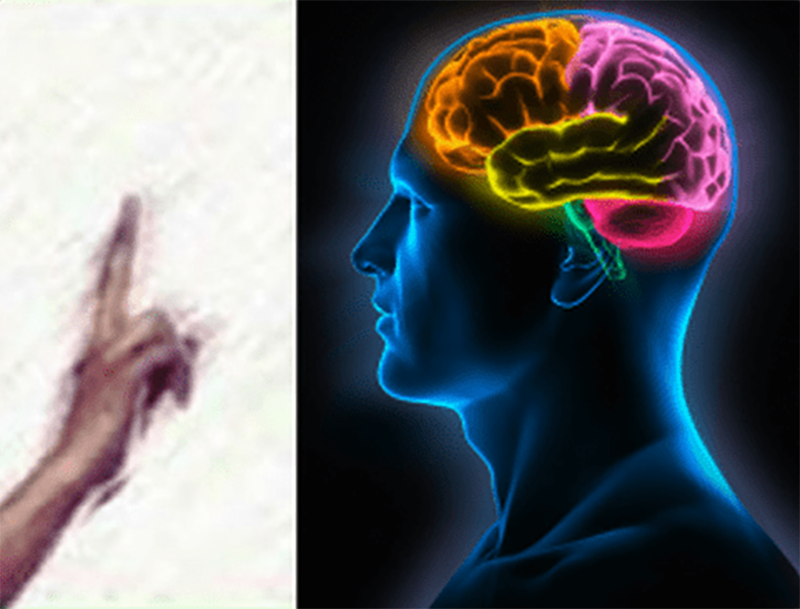Sometimes we find ourselves reacting to situations, words, and people in ways that we do not understand. These reactions may seem irrational, confusing, and even frustrating because we do not know why our reaction had been so strong. It can happen in a social outing, at work or in any interaction with others. We may find certain people to be especially triggering. These reactions may be all too familiar to us. What we may not realize is that often these reactions are rooted in our past. The past can repeatedly trickle into the present, creating reactions that are not necessarily appropriate for the presenting situation. Having knowledge about what triggers us can help, however, when reactions are rooted in trauma, overcoming them will take more than insight alone. Eye Movement Desensitization and Reprocessing (EMDR) is an effective technique for dealing with traumatic memories.
EMDR uses bilateral stimulation to help people heal from trauma, and assists in reprocessing painful and often previously unconscious memories. The method was developed by Francine Shapiro in 1987.
The beginning
Shapiro discovered that her negative emotions decreased when eye movement went from side to side. Shapiro, curious about this personal discovery, set out to test the effects of eye movement on other people. Through her research, she learned that others also had desensitization toward troubling memories when their eyes were directed from left and right while processing memories. Dr. Shapiro formalized an 8 stage protocol which has since been widely studied and is now one of the preferred treatments for post-traumatic stress. Laurel Parnell added protocols to heal attachment wounds and the understanding of relational deficits to the model. Since then, EMDR protocols have been used to treat developmental trauma shock trauma, addiction, anxiety, and even dissociation.
How it works
At Trauma and Beyond ®, we always work towards stabilization, safety, and connection before we begin the reprocessing of traumatic memories. In initial sessions, we will support clients to develop skills to help them to regulate their emotions and tolerate emotional discomfort in small doses. Building on each person’s strengths, we will focus on both internal and external “resources,” the person has available to them; images in the mind that you can go to support parasympathetic (calming) nervous system responses. Visualization is used to help support positive feelings and a sense of ease. Working together we will explore what tools best work to help you feel comfortable and in control of the process. Again, the reprocessing of traumatic memories only starts when the client is ready to explore without being retraumatized.
In the reprocessing phase of EMDR together with your therapist, you will decide which memories, feelings, bodily sensations or incidents would be right for reprocessing.
Your therapist will first have you recall a memory reminding you to keep an awareness that you are in the present moment and not back in the trauma. You will be asked to notice sensations in your body and negative cognitions about yourself that go with this memory. Once you have a dual awareness of a picture of this memory, while being grounded in the present moment then the use of bi-lateral stimulation can begin. Bi-lateral stimulation can be done by using eye movement, sensors in each hand sounds in each ear, or by watching a light bar. Bi-lateral stimulation is believed to help to integrate traumatic memories and help form new neural pathways.
The later stages of EMDR are about creating new possibilities with a new found sense of freedom from the previously unconscious influence of past traumatic memories. Visualization is used in this phase as we help clients imagine new ways of being and feeling in previously anxiety-producing situations. This new sense of agency promotes self-esteem and increases an overall sense of well being while strengthening new neural-pathways. Our goal is to help you feel free of traumatic memories that consciously or unconsciously have interfered with your life. With this new freedom, many clients have an increased capacity to feel joy, connection, and excitement about life.
If you’re interested in this kind of therapy, please call Trauma and Beyond Center ® for a free phone consultation. We understand that as you read this, you may have questions about whether or not what you are experiencing may be related to trauma or whether EMDR will be right for you. We are only a phone call away. We will be happy to speak with you about your symptoms and what may be the best treatment methods for you, as our therapy is always individualized for each person. We are happy to speak with you about EMDR, Somatic Experiencing, Sensorimotor or a variety of other trauma-informed therapies. Call us at (818) 651-0725.


